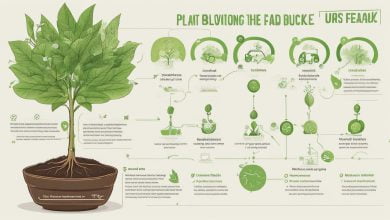
Full stack development is a dynamic and fast-paced field that requires a diverse skill set. Aspiring developers must navigate a complex journey to achieve mastery and become professional full stack developers. This guide will help you unlock your journey to mastery by providing a comprehensive roadmap to becoming a professional full stack developer.
Key Takeaways
- Embarking on a journey to mastery in full stack development requires dedication and a diverse skill set.
- This guide will provide aspiring developers with a comprehensive roadmap to becoming a professional full stack developer.
- Continuous learning, practical experience, and community engagement are essential for success in the full stack development field.
The Fundamentals of Full Stack Development
Full stack development is a multifaceted field that requires a diverse range of skills. Aspiring full stack developers must master both front-end and back-end development, as well as understand server management and databases. This section will cover the core skills required for full stack development, and provide an overview of the full stack development journey.
The Basics of Front-End Development
Front-end development refers to the parts of a website that users can see and interact with. This includes the layout, design, and functionality of the website. To become a full stack developer, it is crucial to master front-end development skills, including HTML, CSS, and JavaScript.
HTML is the backbone of any website, defining the structure and content of pages. CSS is used to style HTML elements, making them visually appealing and user-friendly. JavaScript, on the other hand, adds interactivity and functionality to websites.
Additionally, full stack developers need to understand the importance of user experience (UX) design and responsive web design. UX design involves creating websites that are easy to use and navigate, while responsive web design ensures that websites are optimized for different devices and screen sizes.
The Ins and Outs of Back-End Development
Back-end development refers to the parts of a website that users cannot see, including the server, databases, and APIs. Full stack developers must have a solid understanding of server-side programming languages, such as Ruby, Python, or PHP. They also need to be familiar with databases, which allow for efficient data storage and retrieval.
APIs, or application programming interfaces, are used to connect different parts of a website or application. They allow for seamless communication between the front-end and back-end of a website, making it easier for users to interact with the website.
The Role of Databases in Full Stack Development
Databases are an essential part of full stack development, allowing for efficient data storage and retrieval. Full stack developers need to understand different types of databases, including SQL and NoSQL databases, and how to design and optimize them for specific use cases.
SQL databases are ideal for structured data, such as financial records or customer information, while NoSQL databases are better suited for unstructured data, such as images or videos. Full stack developers also need to know how to use database management systems, such as MySQL or MongoDB, to interact with databases.
The Full Stack Development Journey
Becoming a full stack developer requires a combination of technical skills, problem-solving abilities, and creativity. It is important to continuously learn and grow as a developer, staying up-to-date with the latest technologies and trends. Developing a professional portfolio and gaining practical experience through internships, freelance work, or personal projects is also essential in building a successful career in full stack development.
- Front-end development involves HTML, CSS, and JavaScript, as well as UX and responsive web design.
- Back-end development requires knowledge of server-side programming languages, databases, and APIs.
- Databases are essential for efficient data storage and retrieval, and full stack developers need to understand SQL and NoSQL databases.
- Continuous learning and practical experience are crucial for success in the field of full stack development.
Mastering Front-End Development
Front-end development is a crucial component of full stack development. It involves the creation and design of the user interface, as well as ensuring a seamless user experience. To become a professional full stack developer, one must have a strong understanding of front-end development.
HTML, CSS, and JavaScript are the essential building blocks of front-end development. HTML provides the structure of the web page, while CSS is responsible for the design and layout. JavaScript adds interactivity and functionality to the page. Understanding these three languages is key to mastering front-end development.
It’s also essential to have knowledge of user experience (UX) design and responsive web design. UX design focuses on ensuring users have a seamless and enjoyable experience on the website. Responsive web design allows the website to adjust and adapt to different screen sizes and devices, providing a consistent experience across all platforms.
To master front-end development, it’s important to practice and experiment with different design and coding techniques. There are numerous online resources available, such as Codecademy and Udemy, that provide courses and tutorials on front-end development.
Remember: A solid foundation in front-end development is the first step to becoming a professional full stack developer.
Navigating Back-End Development
Now that you have a solid understanding of front-end development, it’s time to dive into the world of back-end development. Unlike the visible front-end, the back-end of a website consists of the server-side code that powers its functionality and handles user data.
Back-end development involves a different set of skills, including proficiency in one or more server-side programming languages like Python, Ruby, or PHP. You’ll also need to know how to work with databases, APIs, and server management.
The back-end plays a crucial role in a full stack development career, as it influences both the site’s functionality and user experience. Armed with a strong understanding of the back-end, you’ll be able to create responsive and dynamic web applications that meet the demands of clients and users.
When learning back-end development, it’s helpful to have a specific project in mind. Consider working on a personal project or contributing to an open-source project to gain practical experience. Practice using database management systems like MySQL or MongoDB, and learn how to integrate them with your server-side code.
There are also many online resources available to help you develop your back-end skills. Websites like Codecademy, Udemy, and Coursera offer courses on various back-end development topics, including server-side programming languages and databases. Additionally, there is a wealth of information available on blogs, forums, and social media platforms like GitHub and Stack Overflow.
Understanding Databases and Data Management
As a full stack developer, you need to have a strong understanding of databases and data management. A database is an organized collection of data that can be accessed and managed through a computer system. It is essential in building dynamic web applications that require the storage and retrieval of data.
There are various types of databases, including SQL and NoSQL. SQL databases are relational and use structured query language to manage data. NoSQL databases, on the other hand, use unstructured data models and are more flexible in handling large amounts of data.
In order to design an efficient database, it is important to understand the principles of normalization and denormalization. Normalization involves organizing data into tables to reduce redundancy, while denormalization involves consolidating information for faster retrieval. By optimizing your database, you can improve the performance of your web application.
Tools such as MySQL, MongoDB, and Oracle are commonly used in full stack development to manage databases. It is important to choose the right tool for your project and to stay up-to-date with the latest trends in database management.
The Art of Problem Solving and Logical Thinking
As a full stack developer, the ability to solve complex coding problems efficiently is crucial. Problem-solving skills are not something that can be taught overnight; they require a mix of experience, logical thinking, and practice.
One way to improve your problem-solving skills is by practicing with different types of coding problems. Websites like LeetCode and HackerRank offer a variety of coding challenges categorized by difficulty level. Solving coding puzzles regularly can help you develop a problem-solving mindset and improve your logical thinking skills.
Another approach to problem-solving is breaking down the problem into smaller sub-problems. This technique can help you tackle complex problems one step at a time without getting overwhelmed. Divide a problem into smaller sub-problems and solve each sub-problem one by one, gradually building up to the solution of the original problem.
Collaboration with other developers can also help you improve your problem-solving skills. Participating in hackathons or working on open-source projects can expose you to different approaches and perspectives in problem-solving. Exploring different solutions and learning from other developers can help you progress in your full stack development journey.
Finally, keep in mind that developing your problem-solving skills is not an overnight process. It takes time and effort to improve your logical thinking and approach to problem-solving. The more you practice, the more confident you will become in tackling complex coding problems.
Building a Professional Portfolio and Gaining Experience
As you navigate your full stack development journey, building a professional portfolio is crucial in establishing yourself as a professional full stack developer. A portfolio showcases your skills and experience and serves as a tangible representation of your abilities.
Consider creating a personal website where you can display your projects, skills, and experience. Use your website to highlight your best work and explain your development process.
Additionally, practical experience is vital in shaping your full stack development career. Opportunities to gain experience include internships, freelance work, or personal projects. These experiences allow you to learn new skills and technologies while building your portfolio.
When developing your portfolio, remember to tailor it to the type of work you want to do. Consider the type of company you want to work for and what skills and experience are required for that role. Highlight projects and skills that align with those requirements.
Becoming a professional full stack developer takes time and effort. Continuously developing your skills and gaining practical experience are the foundations for building a successful career in full stack development. Keep working on your portfolio, continue learning, and take advantage of all opportunities to gain experience.
Staying Updated with the Latest Technologies and Trends
Full stack development is a rapidly evolving field, with new technologies and trends emerging all the time. To stay ahead of the curve, it’s essential to keep learning and growing your skillset. This guide serves as a roadmap to becoming a professional full stack developer, but the journey doesn’t end there.
One of the most important things you can do as a developer is to stay updated with the latest technologies and trends. This means keeping up with industry news and following thought leaders in the field. You can also participate in online forums and discussions or attend conferences and events.
Resources for Staying Updated
There are a variety of resources available to help you stay up-to-date with the latest developments in full stack development:
- Blogs and Newsletters: Follow blogs and newsletters from industry leaders like Smashing Magazine, A List Apart, and CSS-Tricks.
- Podcasts: Listen to podcasts like CodeNewbie, Full Stack Radio, and JavaScript Jabber to stay updated on the latest trends and best practices.
- Online Courses: Platforms like Udemy, Coursera, and Pluralsight offer a variety of courses on full stack development.
- Open-Source Projects: Participating in open-source projects is a great way to gain experience and stay updated with the latest technologies.
By continuously learning and experimenting with new technologies, you’ll be better equipped to solve problems and build innovative solutions for your clients and users.
Networking and Collaboration in the Full Stack Development Community
As you embark on your full stack development journey, it’s essential to recognize the value of networking and collaboration. Connecting with other developers and industry experts can provide valuable insights and opportunities for professional growth.
One way to engage with the full stack development community is by joining online communities such as Stack Overflow, Reddit, and GitHub. These platforms offer a wealth of resources and opportunities for collaboration with other developers.
Attending conferences and meetups is another excellent way to expand your network and gain insights into the latest industry trends. Many conferences offer workshops and keynote speeches from influential industry leaders. Meetups provide a more informal setting for discussing ideas and sharing experiences with peers.
Participating in open-source projects can further hone your skills and allow you to collaborate with developers from around the world. You can contribute to existing projects or start your own and invite others to join.
Building meaningful relationships with fellow developers can lead to new job opportunities, personal projects, and valuable insights into the latest technologies and trends. Don’t hesitate to reach out and connect with others in the full stack development community.
Conclusion
Congratulations! You’ve embarked on a journey to mastery in full stack development. By following this guide, you have gained a comprehensive understanding of the fundamentals of full stack development, including front-end and back-end development, databases, server management, problem-solving skills, and more.
Remember, becoming a professional full stack developer requires continuous learning, practical experience, and community engagement. Keep building your portfolio and gaining experience through internships, freelance work, or personal projects and stay updated with the latest technologies and trends.
Don’t forget to network and collaborate with other developers in the full stack development community. Join communities, attend conferences, and participate in open-source projects to build professional relationships.
The journey to becoming a professional full stack developer may be challenging at times, but with persistence and dedication, you can achieve your goal. So keep learning, keep growing, and enjoy the process of becoming a master of full stack development.
FAQ
Q: What is full stack development?
A: Full stack development refers to the development of both the front-end and back-end components of a website or application. It involves working with various technologies and programming languages to create a complete and functional product.
Q: What skills do I need to become a full stack developer?
A: To become a full stack developer, you will need a strong foundation in front-end technologies such as HTML, CSS, and JavaScript. You will also need to have knowledge of back-end development, including server-side programming languages, databases, and APIs.
Q: How can I improve my problem-solving skills?
A: Improving problem-solving skills requires practice and a logical approach. Take on coding challenges and puzzles, break problems down into smaller steps, and seek out resources and tutorials that focus on problem-solving techniques.
Q: How important is networking in the full stack development community?
A: Networking is crucial in the full stack development community as it allows you to connect with other professionals, learn from their experiences, and discover new opportunities. Joining online communities, attending conferences, and participating in open-source projects are all great ways to network.
Q: How can I stay updated with the latest technologies and trends in full stack development?
A: Staying updated with the latest technologies and trends in full stack development requires continuous learning. Follow industry blogs and websites, join relevant online communities, and take advantage of online courses and tutorials to keep your skills up to date.








